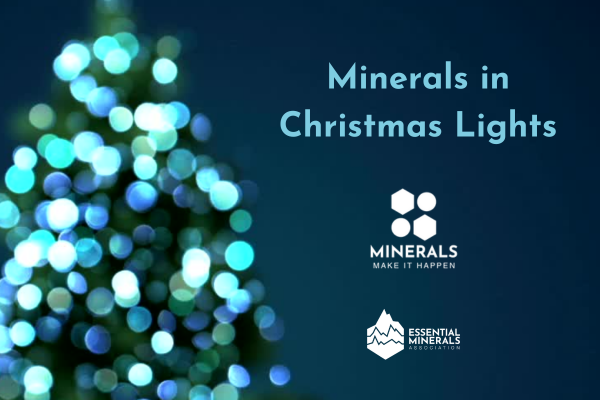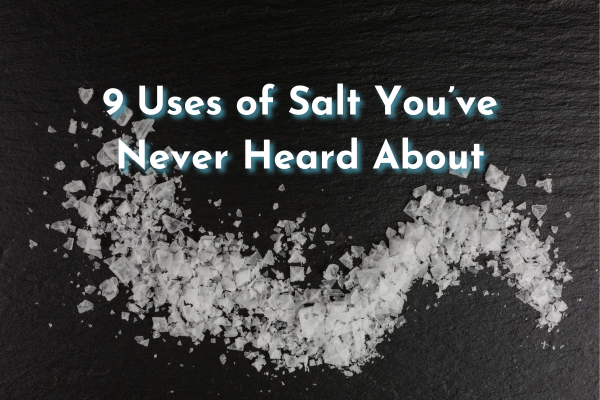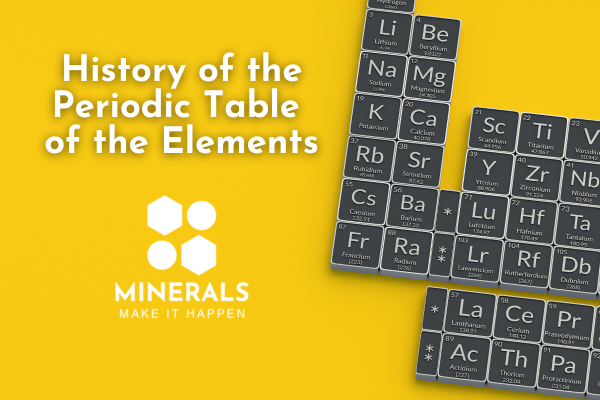The twinkle of Christmas lights is one of the season's most magical sights. From dazzling displays on homes to glowing ornaments on the tree, these lights bring joy and warmth to holiday celebrations. But have you ever wondered what makes them shine? The answer lies beneath the Earth's surface: minerals. Without them, Christmas would quite literally be darker. Minerals Make It Happen!
The Lightbulbs
At the heart of every Christmas light is the bulb, and minerals are key to its construction and functionality.
- Glass: The bulb’s casing is made from silica, a mineral derived from quartz sand. Silica is melted and molded into the transparent shell that protects the inner components while allowing the light to shine through.
- Tungsten: Traditional incandescent bulbs rely on tungsten filaments. Tungsten’s incredible heat resistance allows it to glow brightly without melting, producing that classic warm light we associate with the holidays.
- Rare Earth Elements: Modern LED lights are packed with minerals like yttrium, europium, and terbium. These rare earth elements are used in phosphor coatings to create vivid colors. For example, europium gives us bright reds, terbium creates green hues, and a combination of elements produces whites and blues.
- Aluminum Oxide: LEDs also use sapphire (a form of aluminum oxide) as a substrate for the tiny diodes. This material is durable and heat-resistant, ensuring the longevity of your lights.
- Copper and Gold: Inside LEDs, microscopic wiring made of copper or even gold helps connect the components and conduct electricity effectively.
- Carbon: In some cases, carbon-based materials, like graphite, are used in bulb manufacturing to enhance conductivity or reinforce filaments.
The Wires
Christmas lights need more than bulbs—they need a conductive path for electricity. This is where metals shine.
- Copper: Copper is the go-to mineral for wires, prized for its exceptional electrical conductivity. It ensures electricity flows efficiently, powering every bulb in the strand.
- Tin and Nickel: The copper wires are often coated with tin or nickel to prevent corrosion and extend the life of the lights, especially when used outdoors.
The Plug and Components
Even the plug and electrical components depend on minerals.
- Plastic Casings: The plugs and sockets are made from plastic, which relies on petroleum products combined with minerals like limestone or calcium carbonate for added durability.
- Metal Contacts: Inside the plug, metal contacts made of brass (a copper-zinc alloy) or other conductive metals ensure a steady electrical connection.
A Mineral Christmas
The minerals don’t stop there. Reflective coatings behind the bulbs often use silver or aluminum to enhance brightness, while the dyes that color the wires or bulbs rely on pigments derived from minerals like titanium dioxide.
So, as you admire your glowing decorations this season, take a moment to appreciate the hidden heroes of the holidays: minerals. They’re in every bulb, wire, and component, ensuring our homes are full of cheer. Without them, Christmas would lose a little of its sparkle.
This year, let the glow of your lights remind you of the incredible journey from the Earth to your tree. After all, Minerals Make It Happen!


